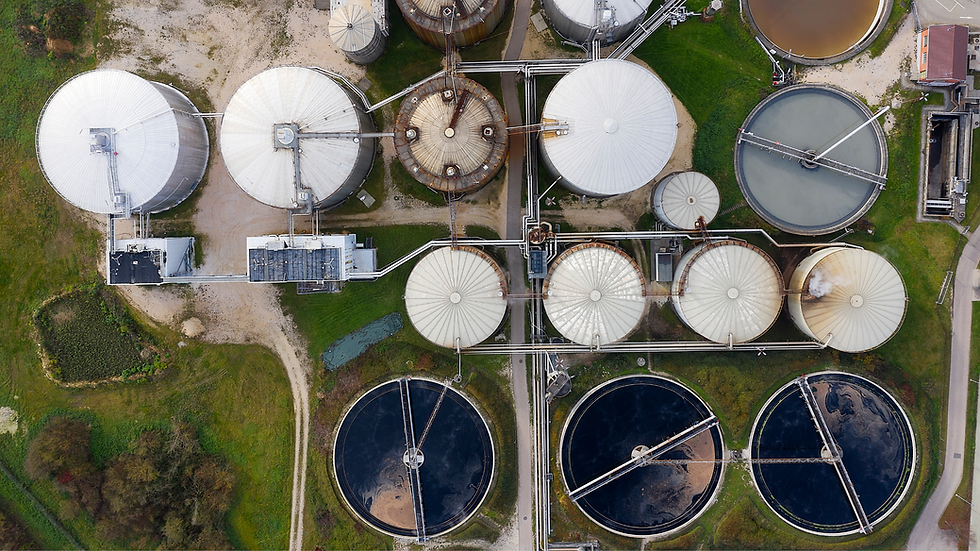Are PFAS Compounds In Our Drinking Water?
- Ceris Van de Vyver

- Jul 29
- 3 min read
Updated: Aug 1

In recent years, concerns over PFAS, per- and polyfluoroalkyl substances, often referred to as "forever chemicals", have risen sharply across the UK. Issues like PFAS can reshape public confidence in our water supply.
With growing media coverage, consumer awareness, and upcoming changes to regulations, more households are asking the same question: should we be worried about them in our tap water?
Let’s go through the current science, the state of our regulations.
What Are PFAS
PFAS are a large group of man-made chemicals that have been widely used since the 1940s for their resistance to heat, oil, water, and stains. You’ll find them in everyday products such as non-stick pans, waterproof jackets, takeaway containers, and even some firefighting foams.
The same properties that make PFAS useful also make them extremely persistent in the environment. They don’t easily break down, which is why they’ve earned the nickname “forever chemicals.” Once released into the environment, PFAS can contaminate soil and water, gradually entering the food chain and accumulating in our bodies.
Research has linked PFAS exposure to a number of health risks, including increased likelihood of certain cancers, thyroid dysfunction, immune suppression, and developmental issues in children. While toxicity data is lacking for many PFAS compounds, some, such as PFOA and PFOS, have been linked to adverse health effects in both animal and human studies when exposure levels are sufficiently high.
Because of these potential health impacts, their presence in drinking water has become a focus of research and greater understanding both globally and here in the UK.
Does UK Tap Water Contain PFAS?
PFAS compounds have been detected in UK source waters, although usually in very small amounts. The key issue lies in the source water - rivers, reservoirs, and groundwater which may be contaminated due to historic industrial activity or use of firefighting foams at airports and military sites.
Our water quality regulatory system is designed to protect customers at all times. Water supplies are made safe through a combination of treatment processes and managed dilution through blending, to achieve stringent regulatory standards, before reaching the customers tap.
As companies carry out more extended monitoring for PFAS we are likely to detect traces in more sources. This does not mean that the water has been unwholesome. Even where a guideline standard is exceeded, this does not mean that customers' health has been harmed, rather that the safety margin is less than we would expect to see achieved.
Water companies will be required to put in more protection to meet the guideline standards or if this cannot be achieved in a suitable timeframe, remove the source from supply pending further assessment of treatment options.
Treated tap water in the UK remains within acceptable limits due to blending and advanced treatment processes, and if any trace levels of PFAS are noted, suitable actions will be taken.
It’s important to note that UK water companies are currently required to test for 48 PFAS compounds, while there are more than 10,000 known globally. This number represents a balance between monitoring a manageable number of compounds while still capturing a significant portion of the PFAS contamination as only a few labs are able to analyse PFAS with the degree of quality required.
Upcoming UK Regulations on PFAS
The Drinking Water Inspectorate (DWI) has announced that, starting from January 2025, water providers must ensure that the combined concentration of 48 PFAS compounds in drinking water does not exceed 100 nanograms per litre (ng/L).
This is a step in the right direction, aligned with international standards and current knowledge and understanding. The DWI worked closely with the European Union to determine the regulatory guideline levels for PFAS compounds in drinking water.
They have provided guidance for water companies to evaluate and risk assess their water sources and to follow a tiered approach with a guideline value of 0.1 micrograms per litre for the sum of 48 named PFAS, which is equivalent to 0.1 parts per billion.
Conclusion
PFAS are a complex and growing challenge for water professionals, regulators, and consumers alike. While the UK is making progress with regulatory updates and improved testing, PFAS are persistent, widespread, and not yet fully understood.
As someone who has spent years in the UK water industry, I can confidently say that our national tap water is among the safest and most rigorously monitored in the world. UK water companies adhere to strict regulatory standards and are proactive in addressing emerging contaminants like PFAS.
While ongoing research continues to shape global understanding of these substances, the systems in place already provide strong protection for consumers.




Comments